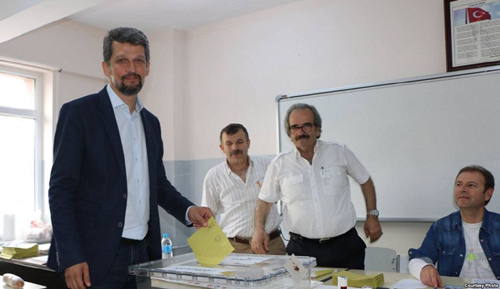YEREVAN (RFE/RL) — The chief U.S. mediator in the protracted Nagorno-Karabakh peace process visited Yerevan Wednesday on the first leg of a regional tour which he hopes will pave the way for renewed face-to-face negotiations between Armenia’s and Azerbaijan’s presidents.
James Warlick told RFE/RL’s Armenian service (Azatutyun.am) that he and the two other co-chairs of the OSCE Minsk Group representing France and Russia are now trying to “frame the issues” that would be on the agenda of the next Armenian-Azerbaijani summit.
President Serzh Sarkisian today received the US Co-Chair and discussed issues related to the current stage and perspectives of the Karabakh conflict settlement.
President Sarkisian reiterated Armenia’s willingness to continue to work with the OSCE Minsk Group Co-Chairs to find a solution to the Karabakh conflict through peace talks.
Sarkisian and Azeri president Aliyev most recently met in Paris in October. Both leaders gave positive assessments of that summit which was aimed at kick-starting the peace process.
However, tensions in the conflict zone were reignited in November by the shooting down by Azerbaijani forces of an Armenian combat helicopter near Karabakh. Also, there was a renewed upsurge in deadly truce violations in January. The mediating troika implicitly blamed Azerbaijan for that escalation.
“Now we are looking to dates where both presidents are free and can meet,” Warlick said ahead of a meeting with Foreign Minister Edward Nalbandian. “And we also need some time to be able to frame the issues.”
“I look forward to talking today to the foreign minister [Nalbandian] about that and I will be in Baku later in the week,” added the diplomat. He gave no possible dates for the next Aliyev-Sarkisian meeting.
The Armenian Foreign Ministry reported no details of Nalbandian’s meeting with Warlick.
The Minsk Group co-chairs held separate talks with Nalbandian and his Azerbaijani counterpart Elmar Mammadyarov in Paris just over a month ago. In a joint statement issued after the talks, they said the two ministers agreed to help “shape the agenda for the Presidents’ discussion.”
The conflicting parties have reported virtually no deadly fighting along “the line of contact” around Karabakh and the Armenian-Azerbaijani border since the beginning of April. Observers in Armenia link this relative calm on the frontlines with the upcoming European Games in Baku. They say that Azerbaijan de-escalated the situation there in order to ensure that armed incidents do not scare away foreign athletes planning to participate in the games.
Accordingly, there are fears that serious truce violations in the conflict zone will again intensify after the multi-sport even in the Azerbaijani capital.
“The sides need to work to maintain and respect the ceasefire,” Warlick said in that regard. “The worst outcome is renewed violence. That does not serve the peace process.”
“We can’t work to achieve a negotiated settlement if a widening conflict breaks out,” he warned.










